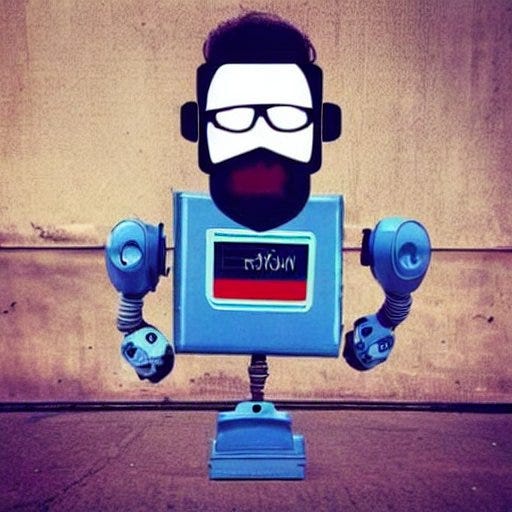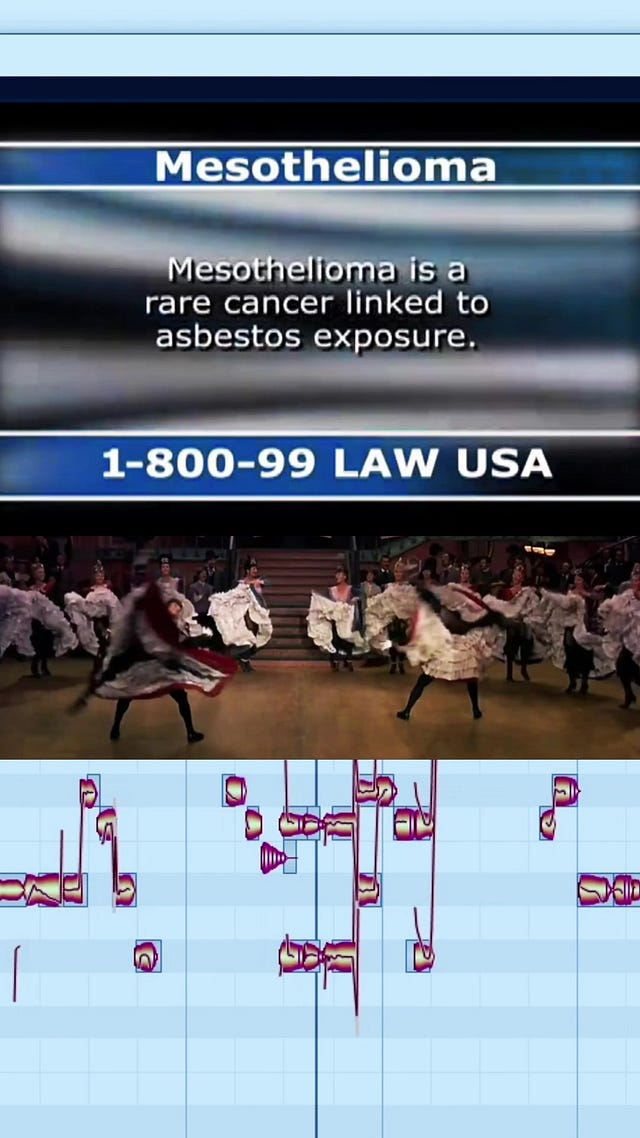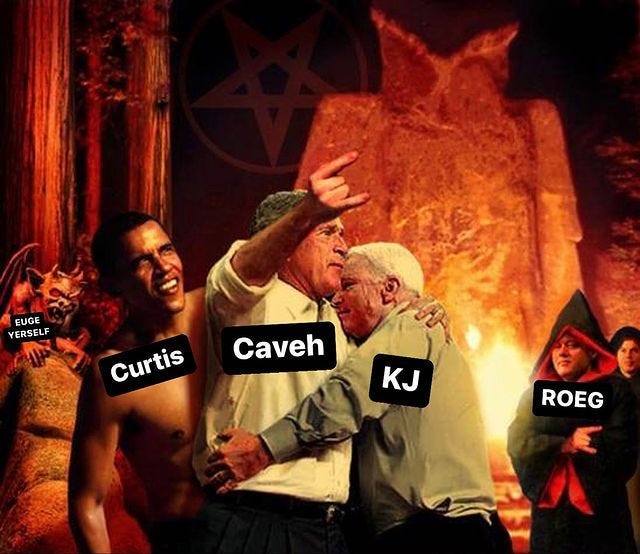“robot hipster” created by Stable Diffusion
I would never even claim that the indie sleaze revival is hot rn, let alone say that the fringe movement is huge. But it certainly has the potential to be huge. But can too much accelerated exposure ruin a scene’s growth? Since this is the first NY scene to grow under this much light and heat, this can only be a rhetorical question.
What we can do now though is look back at how the previous major counterculture - the hipster movement - managed to grow into existence in the Internet age. (For those who insist that the hypebeasts were a major enough movement to replace Indie Twerp hipsters I redirect you here.) An obvious distinction between the dawn of the hipster era and our current moment is that there was so much less Internet in the 2000s. Broadband cable Internet was just starting to get rolled out in the 2000s (it would take rural areas many more years to get this). Videos were shared as Quicktimes. iPods existed not iPhones. Liking vinyl was actually considered an eccentric hobby. By the time podcasts were invented in 2004, The Strokes were already considered passe. When YouTube released its first video in 2005, The White Stripes only had one more album left in the tank before they broke up.
So what did hipsters use? We’re not seriously gonna slap the “word of mouth” sticker on this too right?
Blogosphere
What’s most bizarre about the blogosphere is how something so large, influential and potentially revolutionary disappeared virtually overnight after the ‘08 recession. But blogs like Stereogum, Fluxblog, Tiny Mix Tapes, Large Hearted Boy, Oh My Rockness, The Modern Age, Gorilla vs. Bear, Aquarium Drunkard, Brooklyn Vegaan, and countless others, helped create an independent network of tastemakers. Before there were influencers, there were tastemakers. Like influencers, they got free stuff in order to promote it on their blogs. But you did not know what they looked like and they were not paid to promote it either (not on the record anyway; words like “sell-out” and “payola” still had sting back then). This was where you heard new music though. A blogger would write a well-crafted paragraph or two then give you the promotional mp3 link, hoping to entice you to buy the album (but aware that you would probably BitTorrent it instead). Social media’s big claim to fame is it has no gatekeepers. The blogosphere grew out of gatekeeping. But not the gatekeeping of clueless record labels that still were not sure about digital. No, these were like parasocial friends with great record collections.
Internet discovery was not common [in the 00s], acquiring fame through social networks was less common and social media was in its infancy. Some would argue that this explains the nostalgia for this time and the popularity of the NYC ‘00s rock doc Meet Me in the Bathroom.
By the time Hipster Runoff was shuttered, the blogosphere was dead. All the majors got bought up by major companies and eventually dumped.
Computer-Bound Social Network
This Atlantic article does an admirable job distinguishing between social networks and social media. Sites like Facebook are social networks. They are meant to strengthen already existing social bonds with friends and family (nowadays more for family than friends). Social media like Instagram and Twitter are meant to establish parasocial bonds for the content you publish. By the time the hipsters had ascended, all that existed were computer-bound social networks like MySpace. MySpace was the preferred social network for musicians, but as the Atlantic article points out, “the site’s primary content, music, was seen as separate from its social-networking functions.” This is an extremely far cry from TikTok (what many call networked media). Most songs on TikTok are not performed by the actual artist. They are lip-synched, remixed, sometimes even ruined.
 Tiktok failed to load.
Tiktok failed to load.Enable 3rd party cookies or use another browser
MySpace offered a relatively straightforward experience. Let’s say you see a cute girl at a party. Too shy to approach, but you find her profile on MySpace. She likes some local indie band. Didn’t work out between you too, but now you have a new band you like.
This type of music discovery was much more rare than discovering music on blogs, which is perhaps the most interesting contrast between then and now. In the ‘00s, radio was still a major player and discovering music on the Internet was considered niche back then. But even within the Internet confines, an mp3 blog was necessary to lift your band up and one mediocre Pitchfork review could send you to state fair hell.
So to recap: Internet discovery was not common, acquiring fame through social networks was less common (unless you were the Arctic Monkeys or comedian Dane Cook) and social media was in its infancy. Some would argue that this explains the nostalgia for this time and the popularity of the NYC ‘00s rock doc Meet Me in the Bathroom.
These seem like ideal conditions for what Brian Eno called “scenius.” If a genius refers to a person who creates exceptional work, then “scenius” refers to a scene that revolutionizes culture. Examples he includes here are:
1905-1915 in Russia; Dadaism in France; the experimental music scene in America through the late fifties and early sixties; the Anglo-American psychedelic scene of the sixties; punk in 1975-8
It may seem forced to shoehorn the ‘00s NY music scene with these movements, but it cannot be denied that this music and style helped export the idea of “Brooklyn” to the world, especially during the Indie Twerp era.
Also, scenius grows like mildew in the dark. Too much sunlight sterilizes and destroys it. Let’s check in with our current revolution to see what is spreading it.
Podcasts
An obvious difference between the two eras is the centrality of podcasts. Less obvious is the difference between who are running the podcasts and who ran the blogs. In the blogosphere era, the bloggers were understood to not be musicians, filmmakers, etc. They were critics. Or, if you were talented, fans. Fringe podcasts, in line with the tradition of the comedy podcasts that helped popularize the format, are fringe artists themselves. Actress/director Dasha Nekrasova from the Red Scare podcast has director Eugene Kotlyarenko as a guest on her podcast.
Social media is less about artists and more about personalities and Dasha Nekrasova is known more as a downtown personality than as a podcaster or as an actress. You could even say that downtown Manhattan exports personalities now the way Brooklyn exported indie rock back then.
One thing this leads to is a less manicured, controlled image of the scene. Writer Delicious Tacos (not a New York writer but certainly a fringe writer) was on a podcast recently where the host (himself a fringe writer) was breathlessly excited about the forward momentum of the scene. Delicious Tacos wisely demurred. This is not the podcaster’s fault, these are just the times. It is impossible to get work nowadays without creating your own huge following, which means documenting not creating, as Gary Vee says. This also leads to breathless exaltations and other embarrassing social faux pas that, in the ‘00s, would have been awkwardly mumbled in the back room of a loud dive bar.
Another thing podcasts do is take away the mystery that most artists had before now. Was a time when you would hear an indie rocker’s record, not know much about him and then maybe a month later, you read an interview with him in an alt-weekly. And you still didn’t know what his speaking voice sounded like. Many times nowadays you can hear hours and hours of intimate conversations between artists, musicians, playwrights before you ever experience their work (if you even get to that point).
Memes
In the ‘00s, only cats were the stars of memes. Today, many fringe artists have fans that run meme accounts praising (sometimes playfully roasting) the artists they are focusing on. @ioncellcellectuals , the fan account for The Ion Pack podcast (a popular movie podcast) is a good example.
A mistaken assumption before the shitpost era was that memes had to be relatable. Gradually, more and more memes were willfully obscure and surreal. Though they may not have had the same reach, they had a devoted following that got the joke (or were too insecure to admit that they didn’t get it) and sometimes even got the merch.
This type of meme is primarily used for these fan accounts, for similar reasons. A fan that does not get a meme will dig deeper into the cult, into the folklore. Deeper into the Kool-Aid they may swim.
The strengths of memes are the diametrical opposite of a podcast’s weakness. Memes help keep in the dark what podcasts reveal. Memes thrive on anonymity while podcasts run on intimacy. In a very real way memes might help nurture and develop the downtown scenius. But what are they nurturing, exactly?
Mobile Social Media
In this Dimes Square think piece to end all Dimes Square thinkpieces by art critic/scenester Dean Kissick, we learn what’s at the heart of all this:
it’s life turned into theater, or rather “autofiction” in the real world, belle époque in the age of Substack. Is it so distant from all our other forms of identity obsession?
By “other forms of identity obsession” he means “social media” and the answer is “of course not.” Social media is less about artists and more about personalities and Dasha Nekrasova is known more as a downtown personality than as a podcaster or as an actress. You could even say that downtown Manhattan exports personalities now the way Brooklyn exported indie rock back then.
Dean Kissick sees this sea of tweets and Grams as a blessing.1 I am more in line with Josh Citrella's thinking on this.
Many fringers talk about extinction and the end of times. Dramatic, but I do acknowledge that we may be headed towards The Dark Ages. In two senses. In the sense that we may have less interest in intellectual inquiry, deep analysis, artworks, etc. and we may gradually be content with vicious gossip and titillation.
But I would like to make my descent by focusing on the second sense: there not being too many recordings of the current moment. When the blogosphere went extinct, many things were erased. Wrongfully assuming these blogs would grow in stature and become institutions, now readers have to consult their own memories about what they read. The much-touted “end of social media” may bring a similar fate. But when this happened then, the hipster movement was only getting bigger. It certainly did not need blogs or MySpace to grow anymore. Commercials and TV shows did a fine job of popularizing the indie ethos, as eventually did shows like Portlandia.
When social media dies, the city celebrities will not survive. Not if that’s primarily what they are peddling. They may have to resort to having their work represent them. What that work is will be anybody’s guess. Ain’t no telling what can grow in the dark.
He even mentions a TikToker from the area named Serena Shahidi. Her content is nowhere near as fringe or willfully alienating as most of the other personalities from this scene. But judging from her follower count she seems to have cracked the code better than any of them. It seems like she is catchy, radio-friendly new wave compared to the punk/post-punk of downtown fringe.








